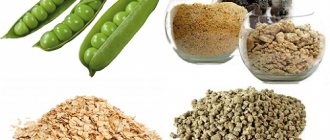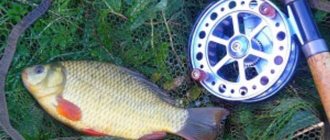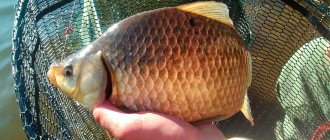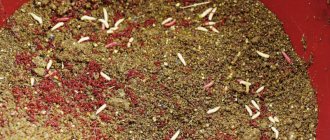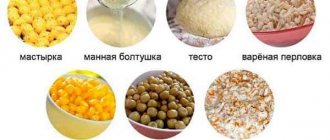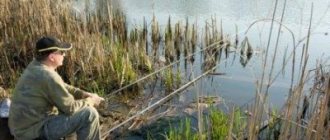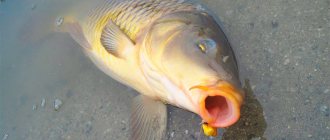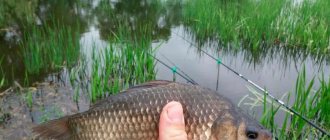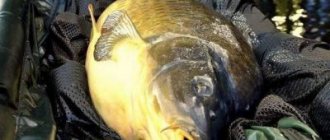Carp: photo and description
Carp is a rather unpretentious fish, but at the same time it has its own characteristics and favorite places. It can live both in small ponds, but quite deep, and in lakes and other bodies of water with a small current.
He loves to eat plant foods, for example, young green algae, so he can often be found near reeds and other vegetation.
In terms of live food, it prefers dragonfly larvae, earthworms, bloodworms, and maggots. As you can see, the diet of carp is very diverse, which gives a wide choice of fishing gear.
It should be noted that it is carp fishing in the spring that begins to bear the first fruits.
In April - May, carp begins its active feeding in order to gain strength before spawning. This means that the fish are happy to leave secluded places in search of food, which gives a greater chance of catching.
Undoubtedly, small places heated by the sun to 15 degrees attract our prey, and vegetation with snags remains the predominant place for its hunting for worms and larvae, but the carp does not avoid other places in order to feast on it.
Therefore, when choosing a place, it is necessary to take into account the active movement of the fish in search of food in the spring.
Catching carp on a feeder in early spring (video)
Lure for catching crucian carp
Lures are used taking into account the time of day and weather. These factors guide the selection of bait for fishing for crucian carp. Here are a few baits that are in demand and effective.
Option #1:
- Maggot
- Feed
- Cake
- Clay
Option #2:
- Bloodworm
- Garlic juice
- Clay
- Crackers
Bait for carp fishing in spring
If you have chosen a good place for fishing, and you are sure that there is a lot of fish here, do not forget about such an attribute as bait. This unsightly mixture will help you lure your prey closer to you and increase the number of bites.
The main thing is to know what components to use for proper bait.
It is necessary to highlight several criteria that the mixture must meet:
The color of the bait should match the color of the bottom as much as possible, so when choosing a bag in the store, you should pay attention to what body of water it is intended for;
The bait must contain the bait that will be used for fishing. For example, crushed bloodworms or pieces of worm, or even better, dragonfly larvae from the same reservoir will irritate the carp and improve the bite;
The more components there are in the bait, the better. Experienced fishermen mix the mixture with corn, cereal, worms and maggots.
The golden rule is that bait for carp, as for any fish, must be fresh. The optimal time for its preparation is the evening before the next day of fishing.
In addition to choosing the right composition and color of the mixtures, it is necessary to be able to properly feed the prey in order to maximize the number of bites, and not reduce their chance to 0.
So, you have found a picturesque place to spend your holiday, take your time to untangle the gear, mark the place and throw 5 to 10 medium-sized balls of bait there.
The balls from the mixture must be made in such a way that when they are fed, they do not break into the water, but reach the bottom, where they create a feeding place.
The best bait for crucian carp (video)
Crucian carp and carp in autumn
Photo by Anatoly Mailkov
It is known that in some reservoirs crucian carp and crucian carp are caught not only in the fall, but also from the ice. The reason for this behavior may be a lack of food. Two important conclusions for the fisherman follow from this fact. Firstly, crucian carp and crucian carp can be effectively caught in the fall. Secondly, in order to realize this opportunity, you need to know those bodies of water in which this fish is active at low temperatures.
To be fair, it should be noted that it is possible to catch crucian carp, even large ones, right up to freezing even in the feeding reservoir itself. It’s difficult, but if you set yourself this goal, it’s possible. But if you rely on the information that is available on the Internet, then it is unlikely that you will be able to choose a reservoir with active fish. For myself, I realized a long time ago that I needed to find such a body of water and points on it myself. The fact is that you can get into a reservoir with active fish, but if you don’t know the points where the fish are concentrated at a given time, then there will be no success.
Crucian carp bite best in those reservoirs where no other fish, except for carp, live. Where roach, perch or bream are adjacent, crucian carp are caught much worse and at certain hours, despite the fact that their concentration can be quite decent.
As the water gets colder, crucian carp, like any other carp fish, with the possible exception of gudgeon, occupies certain places, narrows the area for searching for food and moves less. Therefore, there is no need to rely on the action of bait; you need to look for active fish.
You can start searching in “summer” places, that is, in close proximity to vegetation or near a depression at the bottom. Since all the depressions in “crucian carp” reservoirs are usually filled with silt, only a relatively heavy depth gauge, with which it is easy to “tap” the bottom, can help in their search.
In autumn, large crucian carp very rarely go into shallow water between the vegetation and the shore or into the “windows” of vegetation. The colder the water becomes, the more likely it is to find both crucian carp and crucian carp in the deepest places of the reservoir. There is no point in looking for fish just before the freeze-up; you just need to know where they are concentrated now. The most likely concentration of fish is directly at the dam, that is, in the deepest place.
In shallow water bodies that are heavily overgrown with grass, crucian carp leave the overgrown areas and move into snags. It is worth paying attention to the places where the vegetation ends and open water begins.
If you know several suitable places on a given body of water, then when choosing one of them, be sure to pay attention to the direction, wind strength and air temperature.
The best days for biting are when the wind is warm and does not change direction. It is very good if it rains warmly, but then the crucian carp can rise to half-water. Not quite at half-water, but approximately 20-50 centimeters above the bottom at a depth of two meters. It is interesting that at such moments the crucian carp is active, it feeds, and the probability of a bite is very high. Unfortunately, such moments are extremely rare. If calm weather continues until frost, then the bite continues until ice edges appear.
The lower the water temperature, the worse the crucian carp reacts to bait, which cannot be said about carp. However, in any case, the amount of bait, and most importantly, the concentration of edible components should be small. That is, any standard bait must be diluted with earth, sand or peat.
Nowadays, it is better to feed crucian carp, like carp, in such a way as to immediately use almost the entire prepared dose. The fact is that after additional feeding, the fish usually becomes wary and stops feeding for a long time.
You can decide on additional feeding only when the biting that has begun begins not only to subside, but to stop. You need to supplement the feeding with very small balls, but even in this case, the bite can resume only after some time. Most often, the bite does not resume.
A very effective bait in the cold autumn season is large bloodworms mixed with soil. Moreover, the bloodworm in the bait can be only fifty to one hundred grams.
If the fishing depth does not exceed two meters, then I prefer to feed with clean bloodworms, which must first be soaked in water and even crush the larvae with your fingers. However, the use of bloodworms as bait and bait is not possible in all reservoirs. In some crucian carp reservoirs there are a lot of verkhovka, bitterling and gudgeon, and in well-flowing ones there are also a lot of minnows, which destroy the bloodworms instantly. Even rotan is not as “terrible” as verkhovka. In this case, I use regular steamed fresh cake in the amount of two handfuls.
It is not so easy to choose an effective bait. In autumn, crucian carp and crucian carp do not refuse bloodworms and maggots or a piece of worm, although there are often cases when they actively peck on pearl barley or “chatter”. Often all sorts of “sandwiches” help out, that is, combinations of a piece of a worm with a bloodworm, a pearl barley grain with a bloodworm or a worm’s tail, a worm with maggot.
For large crucian carp and crucian carp, often the best bait is, as in the spring, an ordinary earthworm, always taken near a reservoir, for example, under the roots of nettle or willow. When biting very carefully, as when catching roach, one bloodworm larva or the smallest pearl barley grain can save the situation.
In calm weather, it is worth using light and thin equipment. I have often encountered cases where crucian carp bites became visible only when using equipment weighing no more than 0.4 g on a line with a diameter of 0.08 mm. With carp it is worth trying rigs on a fishing line of 0.145 and even 0.125 mm.
I choose a float with a fairly heavy keel, that is, as stable as possible, so that it immediately takes a vertical position in the water. This is very convenient, because if the bait is light, then a sinker is placed on the rig, but if the bait is heavy, then the sinker does not need to be installed. When fishing in calm weather, when crucian carp can rise to mid-water, I use thin and long needle-type floats, since with their help it is easiest to determine the fishing horizon on which crucian carp is now feeding.
The fishing technique is to silently lower the bait to the selected point, wait a few seconds and also quietly move the equipment a little to the side. This fishing technique is justified when crucian carp is active. If the bites are rare and cautious, it makes sense to lower the bait to the bottom and hold it in place until the bite occurs.
If crucian carp or carp bite on a worm, then it is better to put the bait and bait on the bottom and adjust the descent and position of the bait so that the equipment is not blown away by wind and waves. In this case, the bite can be so accurate that it seems as if it is not the fish touching it, but a worm crawling along the bottom and pulling the equipment along with it.
Fishing with a fly rod in cold autumn water, when crucian carp bites at the point, is technically very difficult. The slightest breath of wind causes the equipment to move away from the bite point. Overcasting may alert the fish. There is a constant loss of time waiting for the fish to calm down. That's why I use a pole or tackle for long casting. A regular sliding float with a load capacity of 3 plus 5 or 4 plus 6 g on a fishing line with a diameter of 0.18 mm. A leash 15-20 cm long made of 0.12-0.14 mm fishing line. The grate is selected in such a way as to hold the moored equipment. It is almost always better to use a large bloodworm on a hook No. 16-18 or a worm as bait.
The interesting thing is that when catching crucian carp or crucian carp in the pit itself, bait may not be needed at all. In general, catching crucian carp in the fall is very similar to catching roach, when the school occupies some place that you need to know. You can activate the fish with bait and present it with the right bait at the right time on a thin rig.
Despite all the apparent difficulties of such fishing, if you manage to do everything correctly, then fishing will take place. With the appearance of the first ice edges, the time will come to hunt for large, and often record-breaking, crucian carp. After the ice forms, the crucian carp can leave the hole and go into snags or areas with hard ground. The carp will not leave the pit and will remain there until March.
Andrey Yanshevsky October 24, 2021 at 02:42 pm
Tackle for carp. How to make the right choice?
To successfully catch any fish, not just carp, you should carefully consider the choice of the necessary equipment, starting with the rod itself and ending with the hooks.
Since each fish has its own character, this must be taken into account when choosing gear. The size of our prey can vary from several grams to several kilograms, and trophy specimens can reach several tens of kilograms. Therefore, durable equipment will help cope with the weight of large fish and its obstinate nature.
The head of the entire equipment is the fishing rod ; the successful capture and fishing of prey depends on its strength and other factors;
Since carp is a large and strong fish that can provide decent resistance when fishing, the rod must be strong. Rods reinforced with carbon fiber or fiberglass are not as sensitive, but will help you catch large fish and increase the chances of pulling them ashore.
The reel must be of high quality and easy to use. It may be an ordinary open coil, but there is a possibility that with a strong jerk it will rip out.
Therefore, it is better to purchase a good reel once than to constantly buy cheap options;
A huge role in the equipment is played by fishing line , the thickness of which determines not only the successful fishing of fish, but also the maximum weight of prey.
Despite this, there is one caveat - carp is a cautious fish, so the less the fishing line is visible, the better. Now in stores you can find fishing line 0.3 mm thick from various materials that have minimal light refractive indexes;
Sinkers should be selected in accordance with the color similarity with the bottom. After all, the less your trick stands out, the better;
The hooks chosen are dark, the size range is from 8 to 14. The hooks must be strong and of high quality, because a large fish can be caught and the slightest tug will simply break a low-quality product.
Carp fishing for beginners (video)
What bait and what lures to catch crucian carp
Crucian carp can be considered a calm predatory fish; in natural conditions it feeds on small invertebrates, insect larvae, and snails. The most effective baits for crucian carp are white or red maggots and worms. Sometimes they are not bad caught using corn, pearl barley or dough.
You can take from the reservoir where you are fishing , catch a snail, caddisfly, leeches and put them on a hook; in most cases, they will work more effectively than maggots or worms.
An important rule: the bait must be fresh, and live if it is not of plant origin.
Plant baits do not work well in autumn and spring.
You can use ready-made store-bought bait as bait, but you need to select it for a specific body of water. Millet or pearl barley porridge works well in most reservoirs; brewed bran is used by many fishermen and fish are usually accustomed to it.
Crucian carp is caught well in good weather and in the daytime, the biting time is usually a couple of hours after dawn, and ends a couple of hours before sunset.
Crucian carp is a schooling fish, so it is necessary to use bait in reserve.
In early spring and autumn, it is better not to use flavorings in bait. At this time, the fish is not particularly active, it does not have a strong appetite and its appetite is highly dependent on the water temperature. You definitely need to add earthworms and maggots to your bait, as they are looking for nutritious protein.
Bait for carp. Tactics for catching carp in spring
Due to the variable taste preferences of fish, for an effective catch you should take a variety of bait.
Thus, both plant and animal baits, and especially their combinations, have proven themselves.
Especially spring carp will appreciate baits such as maggots and worms. They can be used either separately or together.
Here you can add vegetable attachments such as peas and corn, but it is worth considering that individually they do not bring the desired result. Particular attention is paid to aromatic boilies that attract fish. In spring, boilies with meat, fish or sweet flavors are great.
The tactics for catching carp are not particularly complicated; first you should feed the fish, while trying to create a feeding place with a smaller diameter. This is where you should throw the bait, with repeated casts every 10–15 minutes.
Frequent recasts will only frighten the fish and will not bring the desired result. If no bites are observed at all in the baited area, it is better to change it without regret and start all over again from scratch.
The influence of the bottom when fishing for crucian carp
Crucian carp obtain food by digging into the mud and creating a large muddy cloud and leaving traces on the surface in the form of air bubbles. From them, experienced fishermen can determine the presence of fish, although it could also be tench, since it does the same. For this reason, crucian carp mainly live only in places where there is a muddy bottom. Rarely, it can be found in places with a hard bottom, but it enters such places by chance, or you can try to lure it there.
We recommend: Is it necessary to issue a fishing ticket in 2021
It is useless to try to catch crucian carp in reservoirs with a sandy or rocky bottom.
Because of this feature, it is important to select the right baits and groundbaits so that they do not bury themselves in the silt under their own weight.
